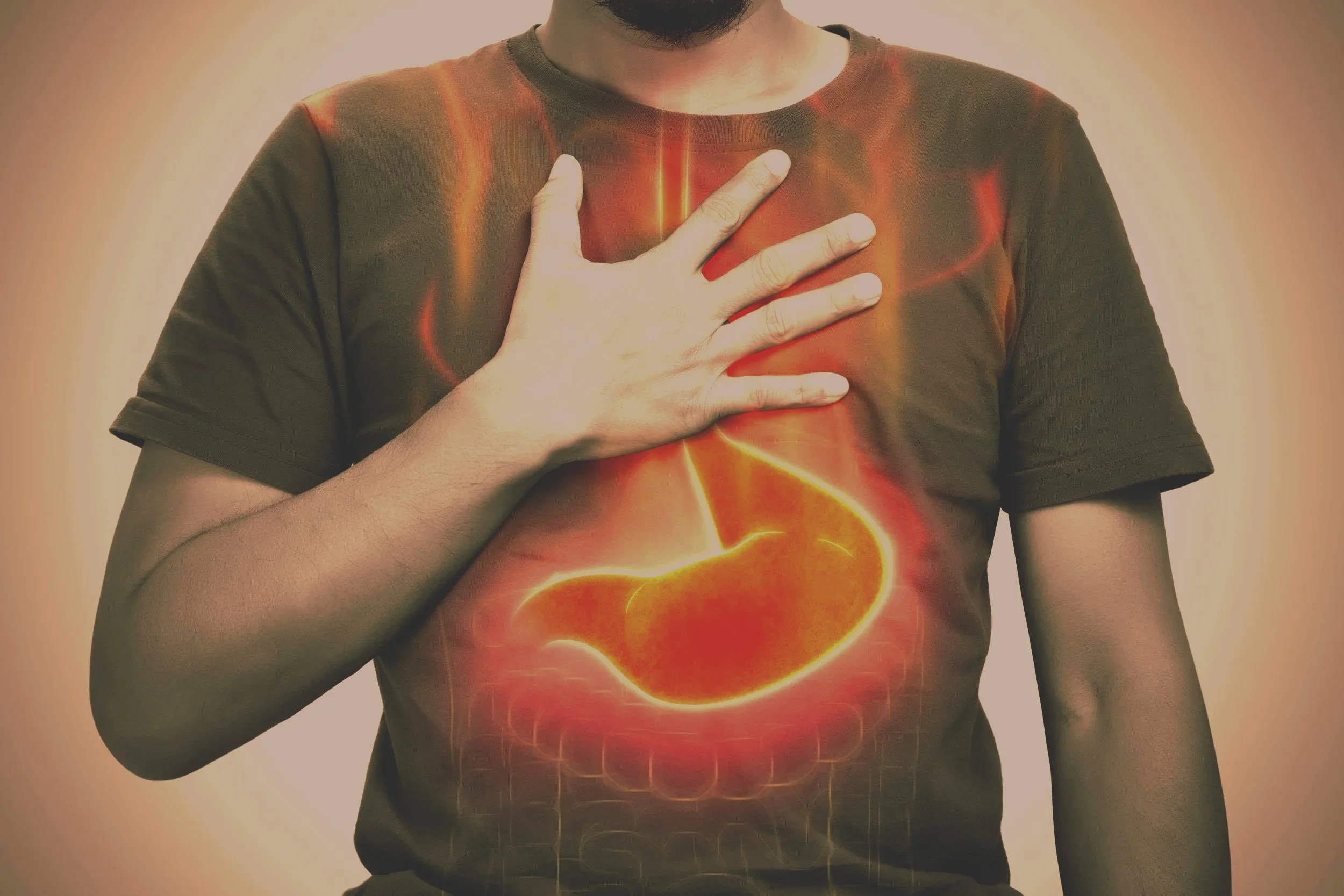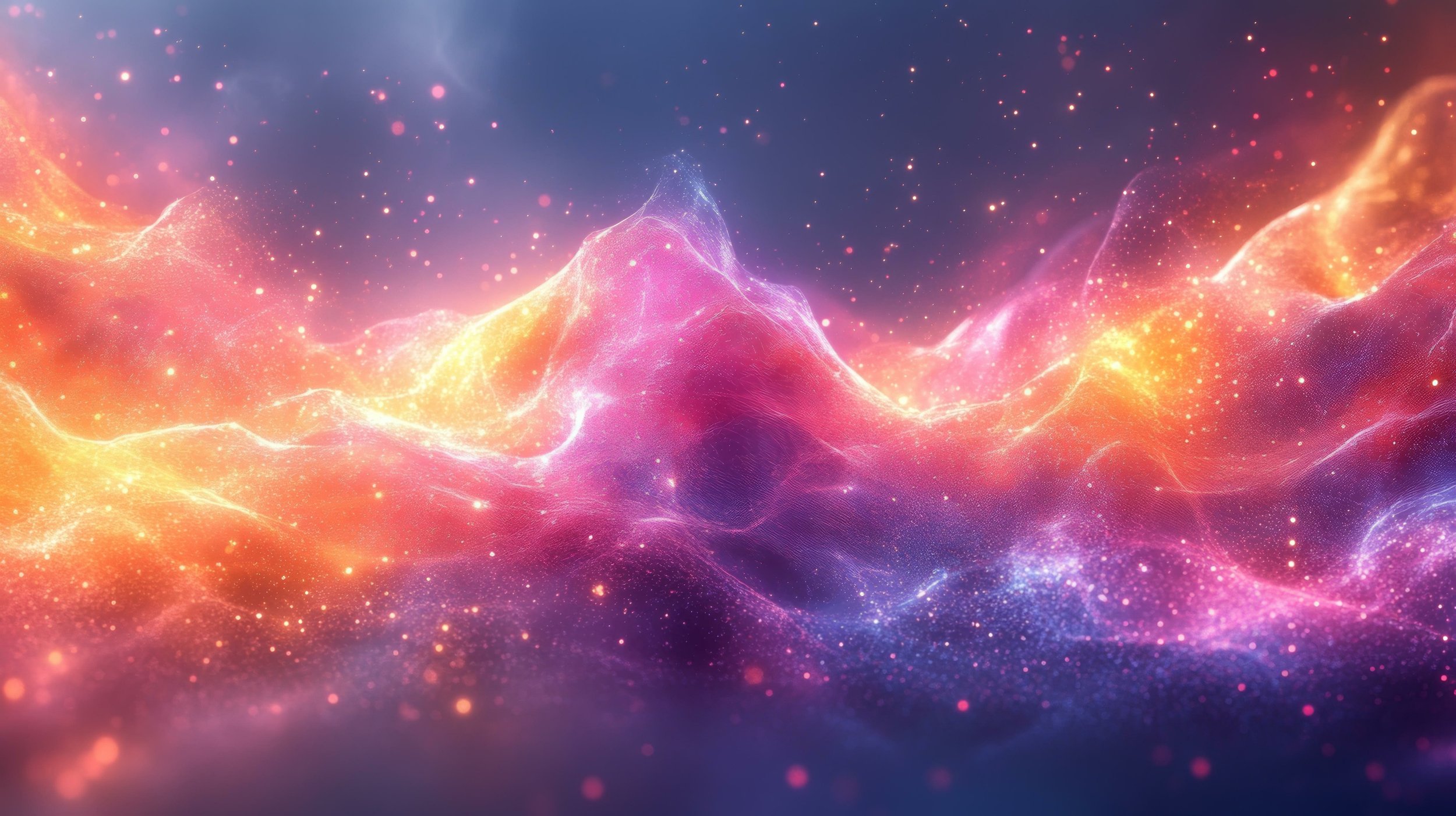ACUPUNCTURE & WELLNESS BLOG
Explore the intersection of ancient medicine and modern health through practical insights and easy-to-follow tips
In a world where autoimmune diseases are on the rise, Hashimoto’s Thyroiditis has become a familiar yet often misunderstood diagnosis. While modern medicine recognizes it as the most common cause of hypothyroidism in iodine-sufficient regions, there’s a richer, more nuanced way to understand this condition—one that speaks to root causes, constitution, and the dynamic intelligence of the body.
Understanding the Shaoyang Layer and Its Role in Hormonal Balance and Stress
In Classical Chinese Medicine, the body is not a machine composed of parts but a dynamic field of resonance—perpetually adjusting, mediating, and transforming. Nowhere is this more evident than in the realm of the Shaoyang, the “pivot” of the body.
But what exactly is this “pivot,” and why does it matter?
Magnified by 25x.
That is the post! Nature provides such nourishment and beauty. ❤️ 🐝
As we step into 2025, we welcome the Year of the Wood Snake, a time infused with wisdom, transformation, and strategic growth. The interplay of Wood and Fire elements this year brings both opportunities and challenges, requiring adaptability, patience, and deep introspection. Whether you follow Chinese metaphysics for personal development, business success, or health insights, understanding the energy of the Wood Snake can help you navigate the year with clarity.
Have you ever felt like you’re on edge for no clear reason? Maybe you’re irritable, sighing a lot, or feeling like there’s a lump in your throat when you’re upset? If so, your body might be dealing with something called Liver Qi Constraint.
When we think about exercise, we often focus on the physical benefits—cardiovascular health, strength, endurance. But what about the brain? A fascinating study reveals that vigorous physical activity, like sprinting, triggers a biochemical shift in the brain, increasing levels of glutamate and GABA, two neurotransmitters crucial for mental clarity, emotional balance, and cognitive function.
Imagine a highway system in your body that carries waste, maintains fluid balance, and supports your immune defenses. That’s your lymphatic system, a crucial but often overlooked component of your health. Understanding how it works and its importance can help us better appreciate its role in keeping us healthy.
In Chinese Medicine, each acupuncture point has its own story and unique set of functions. One of the most versatile points is Sanyinjiao (SP-6), often referred to as the “Three Yin Intersection.” This blog post explores the origin of its name, its location, and the reasons why practitioners rely on SP-6 for a wide range of health concerns.
In our modern world, filled with comforts and conveniences our ancestors could never have imagined, many of us find ourselves paradoxically more stressed, anxious, and unfulfilled. From central heating to smartphones, these advances have created an environment where discomfort is minimized—yet, this constant pursuit of ease may be causing more harm than good.
In Classical Chinese Medicine (CCM), Zang-Fu Qi, or Organ Qi, represents the specific energy of each organ and its role in maintaining balance and health in the body. Every organ in the body has its own Qi, which governs its unique functions, and these energies work together in harmony to sustain life. When the Qi of an organ is strong, it performs its role efficiently, contributing to overall vitality.
In Classical Chinese Medicine (CCM), Zheng Qi, or Upright Qi, represents the body’s overall strength and vitality. Zheng Qi is the harmonious integration of all the body’s protective and nourishing energies, working together to maintain health and resist disease. It’s a reflection of your body’s ability to stay balanced and resilient in the face of challenges, whether they come from external pathogens or internal imbalances.
In Classical Chinese Medicine (CCM), Jing Qi, or Essence, is considered the most fundamental and precious energy in the body. Jing Qi is the root of life—it governs growth, development, reproduction, and aging, forming the foundation for all other types of Qi. Unlike other forms of Qi, which can be replenished through food and air, Jing Qi is finite, making it essential to nurture and protect this vital essence throughout life.
In Classical Chinese Medicine (CCM), Wei Qi, also known as Defensive Qi, acts as the body’s protective shield, defending against external pathogens like cold, wind, and heat. It’s responsible for maintaining the body’s immunity, regulating body temperature, and keeping us safe from illness. While other forms of Qi focus on nourishment and internal support, Wei Qi is all about protection—keeping harmful influences at bay.
Ying Qi is the nourishing energy that flows with the blood through the body, providing the necessary sustenance for our organs, tissues, and cells. It is more refined than Gu Qi (Food Qi), as it has undergone further transformation within the body. While Gu Qi is the raw energy extracted from food, Ying Qi is the product of this energy after it has been processed by the spleen, stomach, and lungs.
In Classical Chinese Medicine (CCM), Zong Qi, also known as Gathering Qi or Ancestral Qi, is one of the most vital forms of energy that powers our daily functions. It serves as a bridge between the food we eat (Gu Qi) and the air we breathe, combining these two fundamental sources of energy to fuel key bodily processes like respiration and circulation.
In Classical Chinese Medicine (CCM), Qi is the fundamental energy that sustains life, flowing through the body and powering every function. One of the most vital forms of this energy is Gu Qi—the energy derived from the food we eat. While many think of food simply as fuel, in CCM, the transformation of food into energy is a sacred process that directly influences our health, vitality, and overall well-being.
In the world of Classical Chinese Medicine (CCM), Yuan Qi—often referred to as Original Qi or Source Qi—represents the foundation of our vitality. It’s the root of life, inherited from our parents at conception, and governs growth, development, and the body’s ability to heal. Yuan Qi is one of the most fundamental forms of energy in the body, and understanding it is key to unlocking greater health and longevity.
In Classical Chinese Medicine (CCM), Qi is the fundamental energy that flows through every living thing, governing the body’s functions, vitality, and health. While many people may associate Qi simply with energy or life force, the truth is that there are many different types of Qi, each with its own role in maintaining harmony and balance in the body.
Gu syndrome is an ancient concept in classical Chinese medicine that addresses chronic, lingering conditions often characterized by mysterious symptoms that don’t respond to conventional treatments. Though largely removed from modern Traditional Chinese Medicine (TCM) curricula, this syndrome offers valuable insights into treating persistent physical and psychological ailments.
Stress is a natural part of life, but when it becomes chronic, it can leave the body stuck in fight-or-flight mode, where it continuously releases stress hormones like cortisol and adrenaline. This prolonged state can affect digestion, mood, and overall well-being. Fortunately, through the vagus nerve, the body has a natural way to shift into rest-and-digest mode to restore balance. Acupuncture is a powerful way to support this transition.
In the world of acupuncture and Eastern medicine, the term Qi is often described as the life force that flows through us, keeping us healthy and balanced. But what if I told you that modern science has discovered a hidden web of electrical energy inside our bodies that aligns with this ancient concept? It turns out, the key to understanding how acupuncture works may lie in something called piezoelectricity and the role of fascia, a connective tissue found everywhere in our bodies.
In the modern world, depression is often viewed as a singular condition—a set of symptoms that fits neatly into categories outlined by Western diagnostic criteria. However, in Eastern medicine, depression is seen quite differently. Rather than being a uniform condition, it is viewed as the manifestation of various patterns of disharmony within the body and mind, each requiring its own nuanced approach to treatment.
Stress has become an almost inevitable part of modern life. While our fast-paced environments demand constant attention, our bodies and minds often pay the price. As stress takes a toll on our well-being, more people are turning to holistic approaches that honor both the body and mind. One powerful combination that addresses stress on multiple levels involves interoception, mindfulness, and acupuncture.
Trauma—whether it’s emotional, like the loss of a loved one, or physical, like an accident—can leave long-lasting marks on both our bodies and minds. In Chinese medicine, this concept is called Heart Shock, and it can have a significant impact on your overall health. While Heart Shock sounds intense, it’s not just about a physical heart condition. It refers to how trauma disrupts the balance in the entire body. Fortunately, acupuncture offers a powerful way to help restore this balance and support your healing journey.
Autumn has arrived in Upstate, NY—and the world is shifting into “pumpkin spice” mode. Fall has a unique way of capturing our hearts, but have you ever wondered why? Indeed, it’s cozy, beautiful and nostalgic, but there’s something deeper happening behind the scenes, rooted in our biology. From oxytocin to dopamine, the season is full of physiological responses that make some of us love fall just a little more than the rest of the year. Let’s explore why that pumpkin spice latte feels so comforting and what’s going on in your brain when you embrace your inner “fall babe.”
Traditional Chinese Medicine (TCM) has played an essential role in bringing acupuncture to the forefront of modern healthcare. Its structured approach, rooted in diagnosing organ disharmonies and restoring balance, has been the foundation for most acupuncture training in the West. However, as acupuncture continues to evolve, many practitioners are beginning to question whether TCM, as it’s taught today, fully represents the depth and complexity of Chinese medicine—or if it’s time for a more nuanced approach.
If you’ve ever experienced unusual sounds in your ear, discomfort triggered by everyday noises, or a sensation of pressure and fullness that doesn’t go away, you might be dealing with Tensor Tympani Syndrome (TTS). This rare condition affects the tensor tympani muscle, which normally contracts to protect the ear from loud noises. However, in TTS, the muscle becomes hyperactive, even in response to normal sounds, leading to a range of unsettling symptoms.
Alcohol is one of the most widely consumed substances in the world, but how much do we really know about what it does to our bodies and brains? While many people enjoy a glass of wine with dinner or a few drinks on the weekend, it's important to understand the impact that even moderate alcohol consumption can have on our health.
Acupuncture, a cornerstone of Traditional Eastern Medicine, has been used for thousands of years to treat various forms of pain by stimulating the body’s energy pathways. In recent years, infrared (IR) light therapy, also known as photobiomodulation, has gained attention for its ability to reduce inflammation and promote cellular repair. Combining these two powerful treatments can provide a more comprehensive approach to pain management, benefiting patients with acute and chronic conditions.
EXPLORE MORE BELOW

Acid Reflux: An Acupuncture + Eastern Medicine Perspective on a Modern Epidemic
Acid reflux. GERD. Heartburn. Whatever name it goes by, it’s become a staple in the lives of far too many. Whether triggered by stress, food, or an overtaxed system, the burning in the chest and sour taste in the mouth are often treated with quick fixes like antacids or proton pump inhibitors.

Acid reflux. GERD. Heartburn. Whatever name it goes by, it’s become a staple in the lives of far too many. Whether triggered by stress, food, or an overtaxed system, the burning in the chest and sour taste in the mouth are often treated with quick fixes like antacids or proton pump inhibitors.
But what if there’s a deeper story here? One that speaks not only to the symptom, but to the pattern beneath it? Classical Chinese Medicine (CCM) offers a refreshingly holistic, layered approach to this all-too-common condition—one that sees reflux not as a malfunction, but as a message.
What Is Acid Reflux (GERD)?
In Western medicine, GERD occurs when stomach acid flows backward into the esophagus due to a weakened lower esophageal sphincter (LES). Over time, this can cause esophageal irritation and a cascade of symptoms:
• Burning chest sensation (heartburn)
• Sour or bitter taste in the mouth
• Regurgitation of food or fluid
• Bloating, nausea, hiccups
• Chronic cough or throat clearing
Conventional treatment often includes acid-suppressing medications. But suppressing acid doesn’t always address the cause—it often just mutes the messenger.
How Acupuncture Helps—The Physiological Angle
Acupuncture offers measurable support for acid reflux by:
• Improving esophageal motility and sphincter tone
• Reducing inflammation in the GI tract
• Enhancing vagal nerve activity, which governs digestion
• Calming the nervous system, reducing stress-triggered flare-ups
• Regulating gastric emptying, minimizing stagnant food and gas buildup
This isn’t just theoretical—clinical studies have shown acupuncture to reduce reflux episodes and improve quality of life in GERD patients.
The CCM View: When Stomach Qi Reverses
In Classical Chinese Medicine, acid reflux is understood as Stomach Qi counterflow (胃气上逆). Stomach Qi should descend. When it rises instead, we feel nausea, belching, burning, even vomiting. But why is it rebelling?
Here’s where CCM gets interesting. The rebellion is never random. It reflects a deeper disharmony in the system’s orchestration—often involving the Liver, Spleen, Shaoyang Pivot, or even the Heart-Kidney axis.
Common CCM Patterns Behind Reflux
1. Liver Overacting on Stomach (Wood Insulting Earth)
Presentation: Reflux triggered by stress or emotions. Rib-side tension, sighing, irritability, and a wiry pulse.
CCM Insight: The Liver constrains the smooth movement of Stomach Qi, causing it to rebel upward.
Acupuncture Strategy: Soothe Liver, harmonize Earth.
Points: LV14, LV3, PC6, ST36, SP4
2. Shaoyang Disharmony (Pivot Blockage)
Presentation: Alternating symptoms—hot/cold, bitter taste, dry mouth, nausea, or vague digestive discomfort.
CCM Insight: The Shaoyang is the body’s pivot; when it’s blocked, up and down get confused.
Acupuncture Strategy: Harmonize the pivot and release the exterior.
Points: GB41–SJ5 pair, GB34, PC6
3. Stomach Heat or Damp-Heat
Presentation: Burning, acid taste, foul breath, yellow coating, irritability.
CCM Insight: Heat forces acid upward and disturbs digestion.
Acupuncture Strategy: Clear Stomach Heat, drain Damp.
Points: ST44, LI11, REN12, PC6, SP9
4. Spleen Qi Deficiency with Cold
Presentation: Watery reflux, bloating, fatigue, cold limbs, loose stools. Worsens with raw or cold foods.
CCM Insight: Weak digestion can’t transform food; turbid yin rises instead of clear yang descending.
Acupuncture Strategy: Warm the middle, support transformation.
Points: REN12, ST36, SP6, DU4, REN6
5. Shaoyin Imbalance (Heart-Kidney Axis)
Presentation: Reflux worse at night, with anxiety, insomnia, or palpitations. Symptoms may feel “heat rising.”
CCM Insight: When Heart Fire isn’t rooted in Kidney Water, fire floats upward—burning the throat and chest.
Acupuncture Strategy: Anchor Heart Fire, root it in Water.
Points: HT7, KI3, PC6, REN14, Yin Tang
✨ From Suppression to Harmonization
What sets the CCM approach apart is that we don’t suppress the acid—we listen to the body’s message. Reflux is not the enemy; it’s a sign of miscommunication between organ systems, often driven by deeper stress, dietary mismatch, or constitutional weakness.
Acupuncture becomes more than symptom relief—it becomes re-patterning. A way to realign the channels, restore digestive harmony, and create space for long-term healing.
Final Thoughts: When the Middle Burner Speaks
The Stomach and Spleen—our “Middle Burner”—are central in Chinese medicine for a reason. When they are harmonized, the entire system thrives. When they’re out of balance, symptoms like reflux, fatigue, and fog creep in.
But there is a way back. One that doesn’t ignore the symptom, but rather uses it as a doorway into a deeper dialogue. Acupuncture—when guided by the wisdom of the classics—offers that pathway.
If you’re living with reflux, you don’t have to live in suppression mode. You can live in rhythm again.































Acid reflux. GERD. Heartburn. Whatever name it goes by, it’s become a staple in the lives of far too many. Whether triggered by stress, food, or an overtaxed system, the burning in the chest and sour taste in the mouth are often treated with quick fixes like antacids or proton pump inhibitors.